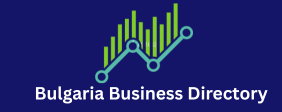Introduction:
In today’s fast-paced world, communication is key, and maintaining an up-to-date and organized phone number list can greatly enhance your personal and professional relationships. Whether you’re managing contacts for business purposes or simply staying connected with friends and family, a well-crafted digital address book can streamline your interactions and make communication smoother than ever. In this blog post, we’ll delve into the art of creating and maintaining an effective phone number list.
Choose the Right Platform:
The first step in creating a digital address book is selecting the appropriate platform or application to host your contact information. There are numerous options available, ranging from built-in smartphone apps to cloud-based services like Google Contacts and Microsoft Outlook. Consider your preferences, synchronization capabilities, and ease of use when making your choice.
Collect Comprehensive Information
When adding contacts to your address book, aim for Latvia Mobile Number List comprehensiveness. Include not only the person’s name and phone number but also other relevant details such as email addresses, social media profiles, and physical addresses. This holistic approach ensures you have a well-rounded view of your contacts and can reach out through various channels.
Categorize and Group Contacts:
Segment your contacts into categories or groups to further enhance organization. Create folders for family, friends, colleagues, clients, and any other relevant groups. This categorization makes it simpler to find and connect with specific individuals without sifting through an extensive list.
Regularly Update Contact Information
Contact details change frequently, so it’s crucial to commit to regular updates. Set aside time each month to review your contact list and make necessary changes. This practice ensures that you always have the most accurate and up-to-date information on hand.
Add Contextual Notes:
Go beyond the basics by adding contextual notes to your contacts. Include details about where you met, common interests, or any other pertinent information that can help you establish a more personalized connection when reaching out.
Utilize Tags and Labels:
Many digital address book platforms offer tagging or labeling features. Take advantage of these options to further refine your organization. Tag contacts with keywords like “potential client,” “mentor,” or “tech enthusiast” to easily filter and find the right individuals when needed.
Backup and Security:
Protect your valuable contact information by regularly backing up your address book. Whether you’re using a cloud-based service or a local application, ensure that your data is secure and easily recoverable in case of any unexpected events.
Respect Privacy and Permissions:
Always obtain consent before adding someone’s contact information to your address book. Respect privacy preferences and only use the information for its intended purpose.
Conclusion:
Crafting an effective digital address book goes beyond just storing phone numbers – it’s about creating a powerful tool that facilitates communication and connection. By selecting the right platform, gathering comprehensive information, categorizing contacts, and staying up-to-date, you’ll ensure that your address book remains a valuable asset in both your personal and professional life. So, start organizing and watch your communication become more efficient and meaningful than ever before.


